My visit last week to Lake Mattamuskeet brought back a lot of great memories.
My Grandfather owned property on the lake until his death in 1982. I went there almost every year from the 1960’s to the 1980’s. Around Thanksgiving and sometimes Christmas, my Grandparents, Uncles, Aunts and Cousins would descend on Fairfield, NC to partake in the duck and goose hunting season. These were opportunities to reconnect with family members while learning and enjoying the outdoors. It seems like only yesterday that we were sitting outside in a circle, plucking ducks while my Grandmother and Aunts were busy in the house preparing dinner. I can still smell the singed down feathers as we completed the final step in the laborious feather plucking process. Ahh…
Lake Mattamuskeet is the largest natural lake in North Carolina. It’s fed entirely by rain water and runoff. Originally, it covered 120,000 acres and was 6 to 9 feet deep. The soil in this area is some of the richest in the world. As a result, interest in draining the lake for farming dates back to the 1700’s. A canal was completed out to the Pamlico Sound in 1837 that reduced the lake to 55,000 acres. It’s only 2 to 3 feet deep now.
By the early 1900’s a plan was hatched to drain the entire lake. The Mattamuskeet Drainage District was formed and the entire lake was drained in 1916, 1920 and again in 1926. The longest period the lake was dry was for 5 years after the final draining. The coal-fired pumping station, shown here, was built by Morris Machine Works and could lift nearly 13,500 gallons of water per second. At the time, it was the largest facility of its kind in the world. But, the project went bankrupt for the last time in 1932.
President Franklin D. Roosevelt’s Civilian Conservation Corps (CCC) was dispatched to Hyde County in 1933 and successfully transformed the old pumping station into the Mattamuskeet Lodge. For 37 years the lodge was operated as a hotel, restaurant and hunting lodge. It was known as the “Goose Hunting Capital of the World”. From 1990 until 2000, local volunteers helped to maintain and preserve the old lodge. But, by the end of 2000, corrosion and deterioration of the structural steel in the building forced its closure and ended all public access.
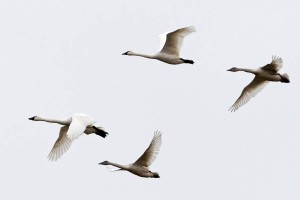 This year Lake Mattamuskeet greeted us with several interesting wildlife specimens. Tundra Swans are common here during the winter months. Their black bill with a small yellow spot in front of the eyes makes them easy to spot. As their name implies, they breed up in the arctic regions during the summer months and winter along the east and west coasts of the US.
This year Lake Mattamuskeet greeted us with several interesting wildlife specimens. Tundra Swans are common here during the winter months. Their black bill with a small yellow spot in front of the eyes makes them easy to spot. As their name implies, they breed up in the arctic regions during the summer months and winter along the east and west coasts of the US.
Usually around late November, Snow Geese can be seen on the lake and surrounding fields numbering in the hundreds of thousands. We did see maybe a thousand on the lake this year but, most likely it’s been too warm so far to get the full migration going.
We saw some sizable rafts of ducks. These Northern Pintails were spotted in the early morning flying over the southeast corner of the lake. They may be second to the Mallard in US population but, the Pintail has always been one of my favorites. The body shape and distinctive markings are simply beautiful. They lack the bling of the Wood Duck but, they make up for that in style and grace. They taste good, too. 🙂
American Wigeon ducks were well represented this year, too. Our first day at the lake we saw numerous Wigeon mixed in with thousands of Coots.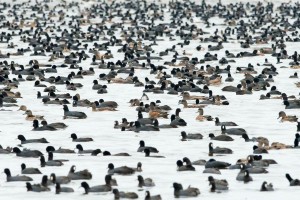
I’m cool with the Wigeon but, who ordered all of these Coots?
This female Lesser Scaup came out of a raft of ducks further out in the lake. It zoomed by me like an F-18 with 25 to 35 mph winds blowing from the northwest. These diving ducks are another hunter’s favorite.
Bald Eagles used to be a rare sight here back in the 1960’s, 70’s and 80’s. I’m happy to report that they’re doing quite well now. We saw maybe nine over a day and a half. I shot this young adult through the sunroof as we were driving down the causeway. Good thing I wasn’t driving and had my camera at the ready. Nikon D800 with the 500 f/4 hand held.
The American Kestrel is the smallest falcon in the US and as fierce as it is beautiful. I’ve always wanted to photograph one of these but, they are very wary. This little guy would fly from tree to tree along the wildlife road never letting us get too close. He stayed in the same general area but always a bit out of reach even though we had big glass.
We took a drive over to nearby Pungo Lake and were rewarded by spotting this immature Red-shouldered Hawk. Unlike the Kestrel, we were relatively close to this guy. Most hawks and falcons have a huge “comfort zone” and immediately fly when a human starts to intrude.
Pungo Lake is actually part of the Pocosin Lakes NWR. Like Lake Mattamuskeet NWR, it’s also a sanctuary for migratory waterfowl. But, on this day we didn’t see any. Maybe they were out in the fields somewhere. Who knows and who cares? We saw a cool hawk! Nuff said…
The dark gray overcast skies and VERY windy conditions made photography a challenge but, it was worth it. I spent some cherished time with my cousins, Jim and Bill. Lake Mattamuskeet graced us with a couple of days filled with wildlife and more importantly, the experience of being alive and outdoors. I may “hunt” with a camera these days instead of a shotgun but, the feelings are the same.
So many great memories…

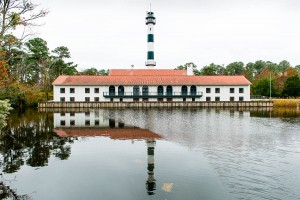
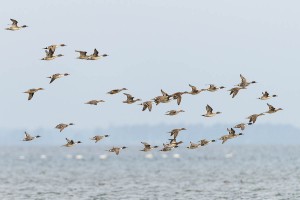
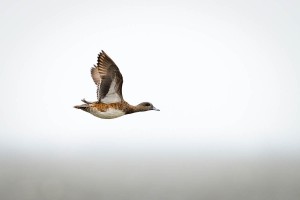
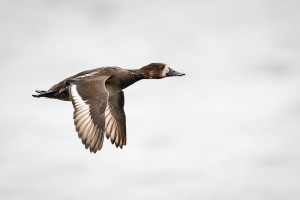
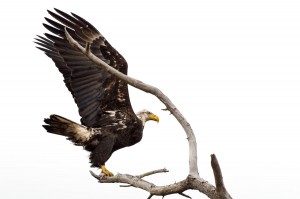
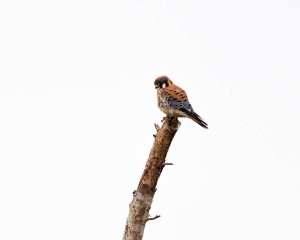
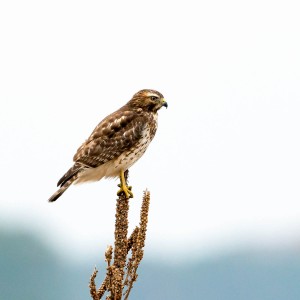
Bill, those are beautiful pictures! I must have been only 10 or 12 years old when I was last there but your pictures bring back many memories!! I know you really enjoyed being there with Jim and Bill.
Thanks!
I only wish we had better light and less wind. On the other hand, we saw lots of wildlife so I really can’t complain too much.